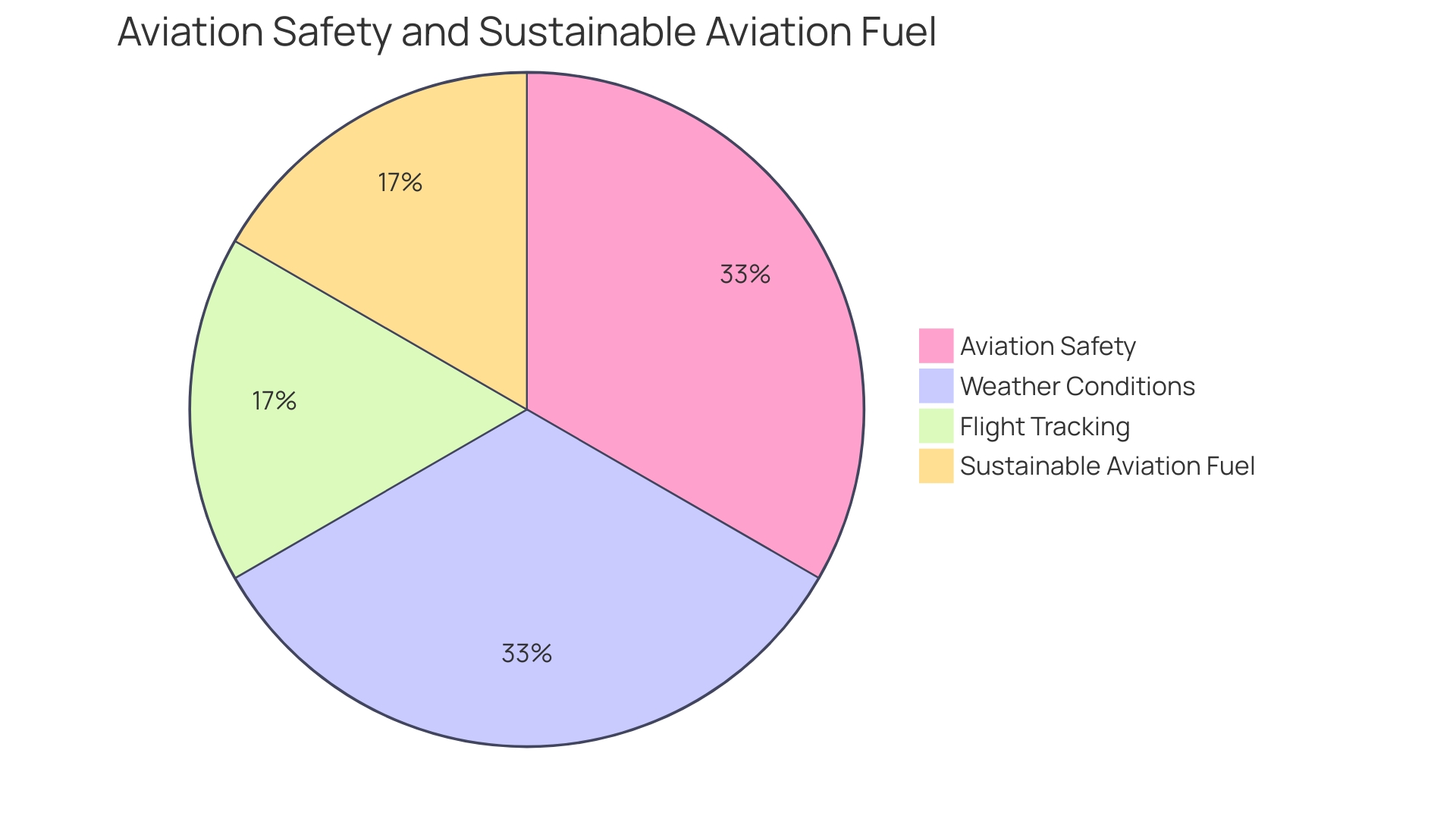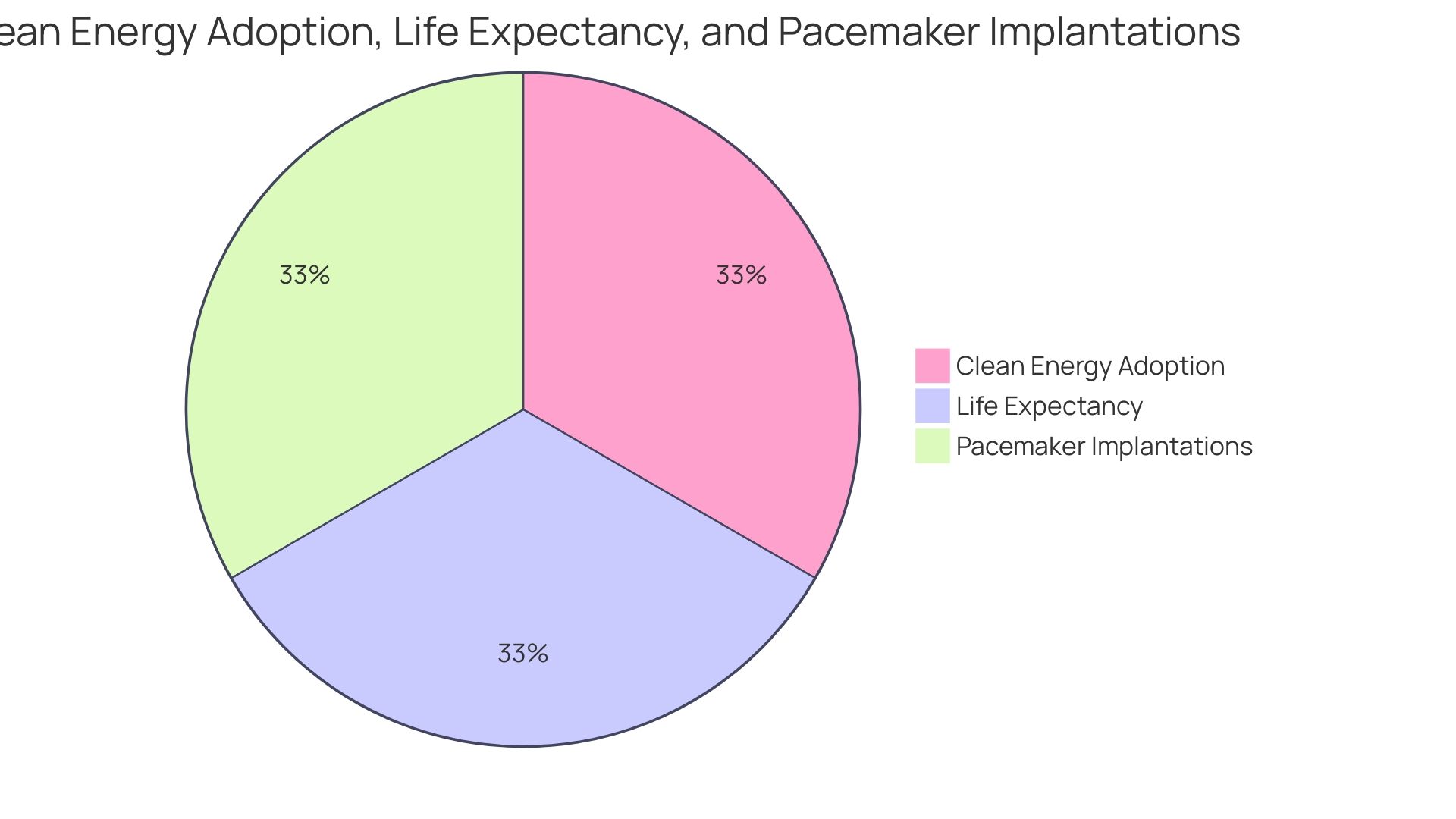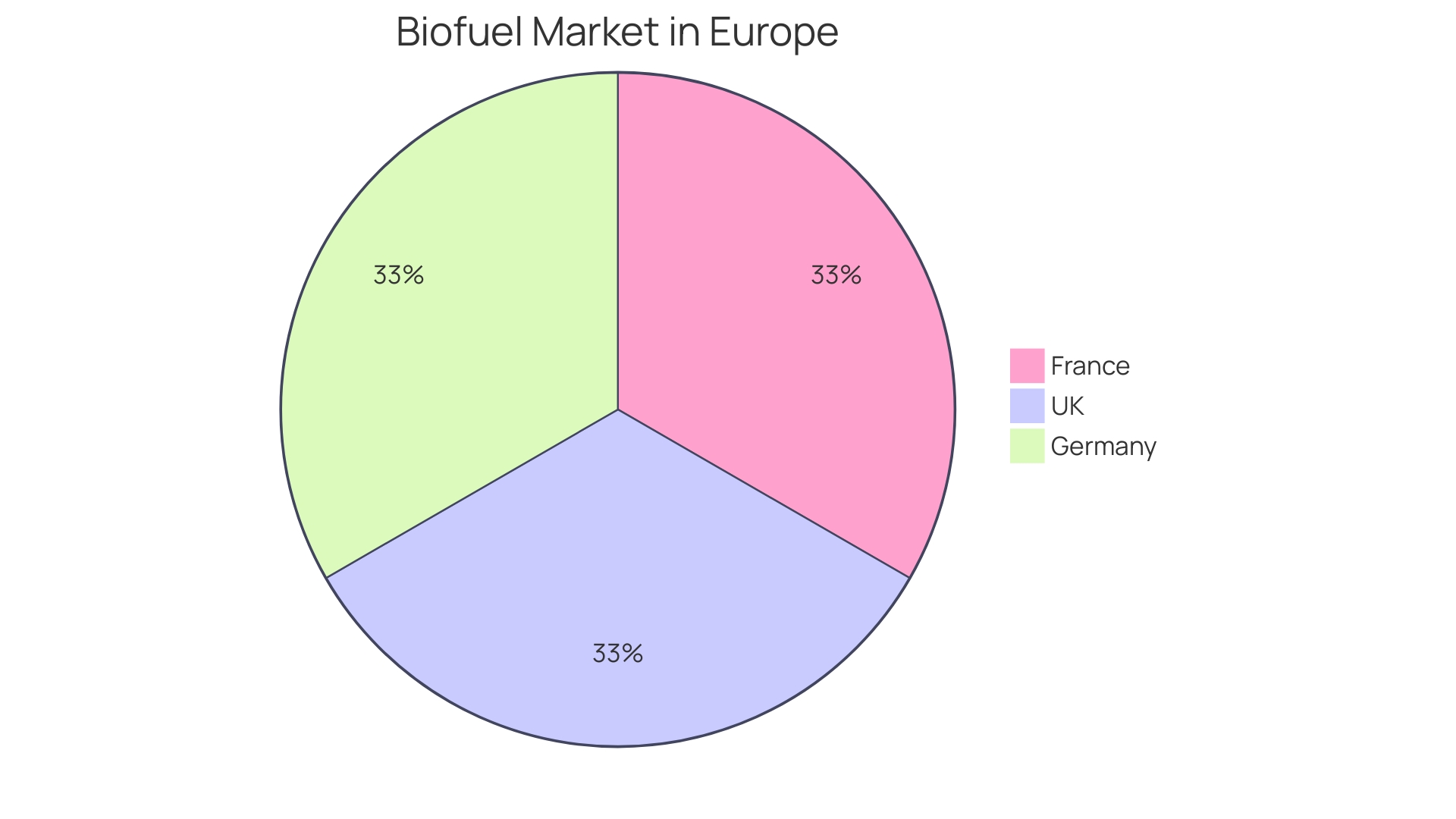Introduction
Sustainable aviation fuels (SAFs) have emerged as a critical solution in the transformation of the aviation industry, which is a significant contributor to global CO2 emissions. With the goal of achieving net-zero carbon emissions, airlines like Virgin Atlantic are pioneering the use of alternative green fuels, highlighting the industry's commitment to a greener future. However, despite these efforts, SAFs currently power only a fraction of flights, emphasizing the challenges faced in scaling up their usage for long-haul journeys.
The urgency for sustainable solutions in aviation is evident, as the sector's emissions are projected to rise alongside increasing demand for air travel. The path to decarbonizing aviation is complex, with technological advancements and the feasibility of electric-powered airplanes remaining uncertain. Other transportation sectors have already made progress in decoupling growth from emissions through innovations like electric vehicles, but the unique energy demands of aviation make its transition more challenging.
Evaluating the techno-economic and environmental implications of SAFs is crucial, as it provides insights into their production, cost-effectiveness, and overall environmental impact. Despite the complexities, renewable jet fuel companies and industry experts are leading the way in finding innovative solutions. Collaborative efforts, supportive policies, and market incentives are key drivers in the adoption of SAFs, with the goal of meeting net-zero targets.
As we look to the future, the growth trajectory of renewable jet fuel companies, combined with progressive regulations, offers promising opportunities for the decarbonization of air travel. The journey towards a sustainable aviation future is well underway, driven by the collective commitment of industry stakeholders and the continuous improvement of SAF production processes.
The Need for Sustainable Aviation Fuels (SAFs)
Environmentally-friendly fuels for air travel are leading the way in transforming the airline industry, a significant contributor to worldwide carbon dioxide discharges. Alternative green fuels are crucial in mitigating the environmental effects of air travel, as demonstrated by the groundbreaking transatlantic flight conducted by Virgin Atlantic that utilized sustainable alternative fuels from London to New York. This significant event highlights the airline industry's dedication to reaching a state of zero net carbon emissions, with Virgin Atlantic leading the way by flying to more than 30 destinations globally and collaborating with Delta Air Lines to create an extensive network.
Despite the progress, SAFs power only a fraction of flights, a mere 0.1%, due to challenges such as the significant volumes required for long-haul journeys. The magnitude of the task is highlighted by the sector's growth path, with air travel and transport pollution anticipated to rise alongside increasing demand for air travel and freight transport. The US air travel sector alone contributes to 7% of the nation's transportation releases, making it the third-largest source of emissions within the sector.
The International Civil Aviation Organization (ICAO) has set ambitious goals for the industry, with a commitment to achieving a state of zero emissions by 2050. However, the journey to achieving carbon neutrality in flying is intricate. Given the lifespan of 20 to 30 years for present aircraft, along with the ongoing rate of technological progress in aircraft design, efficiency, and potential electrification, it is likely that substantial decreases in air travel pollutants might require a considerable amount of time. Moreover, it remains uncertain whether electric-powered airplanes can ever match the performance of commercial airliners for long-haul flights.
The need for sustainable solutions is clear, as other modes of transportation have started to separate expansion from environmental impact through advancements like electric vehicles. In contrast, the distinctive energy requirements of flight have made its green transition more challenging. While airlines may report improvements in CO2 emissions per passenger mile, these metrics do not fully capture the sector's overall environmental footprint.
As pioneers in the field, such as Virgin Atlantic, continue to establish precedents through initiatives like their eco-friendly air travel fuel program, the sector's progress towards a more environmentally friendly future gains momentum. Nevertheless, the requirement for widespread adoption of sustainable aviation fuels (SAFs) and other decarbonization strategies remains a pressing priority for the sector to meet its net-zero targets and mitigate its impact on the planet.
Current Alternative Aviation Fuels and Pathways
While we navigate the challenges of reducing carbon emissions in the airline industry, which contributes approximately 2% to global energy-related CO2 emissions, sustainable fuels for aviation have emerged as a critical piece of the puzzle. With the sector's growth trajectory set to increase emissions without intervention, and technical obstacles limiting the feasibility of battery and hydrogen-powered aircraft, SAFs offer a more immediate and compatible solution for greener skies.
Among the various SAF pathways, hydroprocessed esters and fatty acids (HEFA) are notable for their utilization of fats, oils, and greases, providing a cleaner-burning alternative to traditional jet fuel. Fischer-Tropsch (FT) synthesis, another pathway, converts a mixture of carbon monoxide and hydrogen into liquid hydrocarbons, which can then be used as a jet fuel substitute. Alcohol-to-jet (AtJ) conversion technologies like those showcased by LanzaJet's Freedom Pines Fuels plant in Georgia, transform ethanol into SAF, marking a significant stride toward decarbonizing air travel. Furthermore, e-fuel pathways, which involve synthesizing fuels from CO2 and renewable energy, represent an innovative approach to creating carbon-neutral fuels.
Despite these advancements, the availability of SAF remains a challenge. Currently, less than 0.1% of flights are fueled by SAF, with the sector aiming to achieve a target of 10% by 2030âa goal echoed by airlines like Delta and Air France. To scale up production, partnerships like that of Airbus and Neste are pivotal, as they work together to decarbonize flight. The path towards a sustainable future in air travel is well underway, with the combined efforts of technology, industry commitment, and supportive policy being the key to reaching new heights in eco-friendly flying.

Techno-Economic and Environmental Evaluations of SAFs
Comprehending the techno-economic and environmental consequences of sustainable aviation fuels (alternatives) is a challenging undertaking, necessitating a multifaceted analytical method. Life-Cycle Assessment (LCA) is a crucial tool in this procedure, offering a thorough evaluation of the environmental impact from the creation to the disposal of sustainable aviation fuels. By examining the life cycle of sustainable aviation fuels, we can pinpoint crucial areas where environmental effects are most notable, such as the carbon intensity linked to their utilization. Economic analyses complement LCAs by examining the cost-effectiveness of Safe, considering factors like the market readiness of the technology and the financial viability in the face of fluctuating energy prices.
The importance of such evaluations is highlighted by the worldwide effort for decarbonization in sectors with high energy requirements and significant environmental footprints. For instance, the winemaking sector in the European Union, with its significant economic influence and energy requirements, stands to gain from enhanced energy efficiency and the implementation of renewable energy sources like solar water heating systems. These initiatives are motivated by both economic factors and sustainability goals, echoing the wider challenges and opportunities faced in the production of sustainable aviation fuels.
Additionally, the air travel industry is actively seeking solutions to reduce its carbon emissions, with sustainable aviation fuels being a primary focus. Efforts like Belgium's motivation scheme to promote the use of sustainable fuels by airlines demonstrate a proactive approach to reducing carbon emissions in the airline industry. The program, which aims to cover up to 80% of the extra expenses of sustainable aviation fuels for airlines, reflects the urgency and commitment to achieving net-zero emissions by 2050 as set by the International Civil Aviation Organization.
The path to sustainable aviation is not without its challenges; commercial aircraft typically operate for decades, and the prospect of electrifying long-haul flights remains uncertain. Nevertheless, with only 0.1% of flights currently fueled by sustainable aviation fuels, there is significant potential for expansion in this industry. Deploying Safe at scale will be crucial for the sector to meet its emission reduction targets, highlighting the importance of continued evaluation and improvement of SAF production processes.
Case Studies: Innovative Companies Leading the Way
Renewable jet fuel companies are leading the way in the transformation of the air travel sector, providing innovative solutions to one of the most carbon-intensive modes of transportation. LanzaJet's Freedom Pines Fuels plant in Soperton, Georgia, represents a significant milestone as the world's first facility dedicated to converting ethanol into sustainable flight fuel (SAF). This groundbreaking technology is not just a step but a huge advancement towards carbon-free flying, demonstrating a feasible approach to decrease pollutants in a sector where electrification encounters notable obstacles.
The sector's need for green solutions is underscored by statistics from the International Energy Agency, which notes that aviation contributes 2% to global greenhouse gas emissions. With the demand for air travel set to increase, the pressure to find sustainable alternatives is mounting. Traditional improvements in aircraft design and efficiency are valuable, but given the long operational lifespan of commercial aircraft—often two to three decades—these measures alone are insufficient for timely decarbonization.
The application of sustainable aviation fuels presents the most promising solution for the near and mid-term future, with the potential to integrate with existing aircraft technologies and infrastructure. This synergy is exemplified by BIOTERRAN Biofuels, which harnesses the power of diverse renewable energy sources, acting as a complement to other renewables like solar, wind, and hydro.
In the midst of these advancements, experts like Ric, who has over 40 years in the energy and environmental sectors, emphasize the significance of renewable energy policy and the development of carbon capture and sequestration to enhance the impact of SAFs. The collective experiences of professionals like Alyssa, who brings a decade of energy conservation project expertise, and Brian, with his deep roots in forestry and supply chain operations, provide valuable insights into the complex dynamics of sustainable fuel production and distribution.
The successes of these companies and experts are not isolated events but part of a global movement toward net-zero emissions. The Sustainable Aviation Innovation Challenge, launched by UpLink and the First Movers Coalition, highlights the urgency of this mission. With 130 submissions from around the globe, 16 Top Innovators were selected to join an ecosystem dedicated to accelerating the industry's transition to sustainability.
In conclusion, as we explore the stories of these pioneering companies and individuals, we discover the diverse strategies and cooperative endeavors required to achieve sustainable flight not only as a potentiality but as a tangible achievement.
Policy and Market Incentives for SAF Adoption
Environmentally friendly fuels for air travel have become a crucial factor in addressing the environmental effects of flying, contributing to about 3.5% of the total changes in the planet's energy balance caused by human activities. With carbon dioxide emissions from flying having doubled since the mid-1980s and posing the risk of consuming a quarter of the carbon dioxide budget to maintain global warming within 1.5°C by 2050, the movement towards alternative fuels for air travel has gained momentum. Regulatory frameworks and market incentives are crucial in this transition, utilizing mechanisms such as renewable fuel standards, tax incentives, and carbon offsetting to foster and enhance the adoption of sustainable aviation fuels.
Addressing the effects of air travel that are not related to CO2 emissions, such as nitrogen oxides (NOx) and the heat-trapping contrails, offers a promising approach to mitigate these pollutants that worsen air quality issues around airports and contribute to concerns about human health. The sector's dedication to education and dispelling misconceptions about SAFs is crucial for public acceptance and support. With insights from air travel and energy stakeholders across Europe, the US, and the Middle East, collaborative efforts are recommended to create favorable conditions for SAF scalability.
Recent milestones have been marked by advancements in SAF technology, such as the transatlantic flight powered by unconventional sources like fats and sugars, hinting at the potential for a future where commercial aircraft are propelled by a diverse mix of renewable materials. However, the present production of SAF is inadequate, fulfilling less than 0.2% of the fuel requirements of the sector. The goal set by the Biden administration to raise this figure to 100% by 2050 underscores the urgent need for policy and financial levers to accelerate SAF development and deployment.
These efforts are supported by a safety-centric culture within commercial flying, which is considered one of the safest modes of transportation. The sector's dedication to improving safety and operational efficiency extends to minimizing environmental impacts, with the pursuit of Safe being a testament to its commitment to a sustainable future.

Future Projections and Global Impact
As we explore the future of air travel, a crucial element in reducing the industry's environmental impact is the progress of renewable jet fuel companies. Market analysis forecasts a significant growth trajectory for these entities, propelled by a combination of technological breakthroughs and progressive regulations. Such advancements are poised to play a crucial role in the decarbonization of air travel, a sector historically challenged by high carbon emissions. With air travel demand increasing, the integration of sustainable fuels (SAF) emerges as the most practical approach to achieving mid-century decarbonization goals. This is particularly pertinent considering the longevity of commercial aircraft, which have operational lifespans ranging from 20 to 30 years, and the limitations currently faced by electric-powered alternatives for long-haul flights. The European biofuel market, led by major economies such as France, the UK, Germany, and Poland, exemplifies proactive support for biofuels like ethanol, biodiesel, and renewable diesel through strategic policies. This support is reflected in the expectation that Europe will become the fastest-growing region in the biofuel market. The efforts of companies like Neste, which has established a pioneering partnership with Airbus to reduce carbon emissions in air travel, underscore the sector's dedication to sustainable practices. Neste's initiatives, such as the Neste Impact program, are designed to aid companies in meeting their sustainability targets and reducing emissions effectively. The collective expertise of industry veterans, like those with decades of experience in energy conservation and policy development, further reinforces the potential for SAF to revolutionize the aviation sector and create a more sustainable future.

Conclusion
In conclusion, the aviation industry recognizes the urgent need for sustainable aviation fuels (SAFs) to address its significant contribution to global CO2 emissions. Collaborative efforts, supportive policies, and market incentives are driving the adoption of SAFs to meet net-zero targets.
Renewable jet fuel companies and industry experts are leading the way in finding innovative solutions. The growth trajectory of these companies, combined with progressive regulations, offers promising opportunities for the decarbonization of air travel.
Evaluating the techno-economic and environmental implications of SAFs is crucial. Insights into their production, cost-effectiveness, and overall environmental impact inform the industry's decision-making process.
Policy frameworks and market incentives play a vital role in the transition to SAFs. Renewable fuel standards, tax incentives, and carbon offsetting mechanisms cultivate and bolster the adoption of SAFs.
The future of aviation relies on the advancement of renewable jet fuel companies. Market analysis forecasts significant growth for these entities, driven by technological breakthroughs and progressive regulations. The incorporation of SAFs emerges as the most pragmatic approach to achieving mid-century decarbonization goals.
In summary, the journey towards a sustainable aviation future is well underway. Collaborative efforts, supportive policies, and advancements in renewable jet fuel technology are propelling the industry towards a greener future. With the collective commitment of industry stakeholders, the aviation sector is on track to revolutionize air travel and create a more sustainable future.




